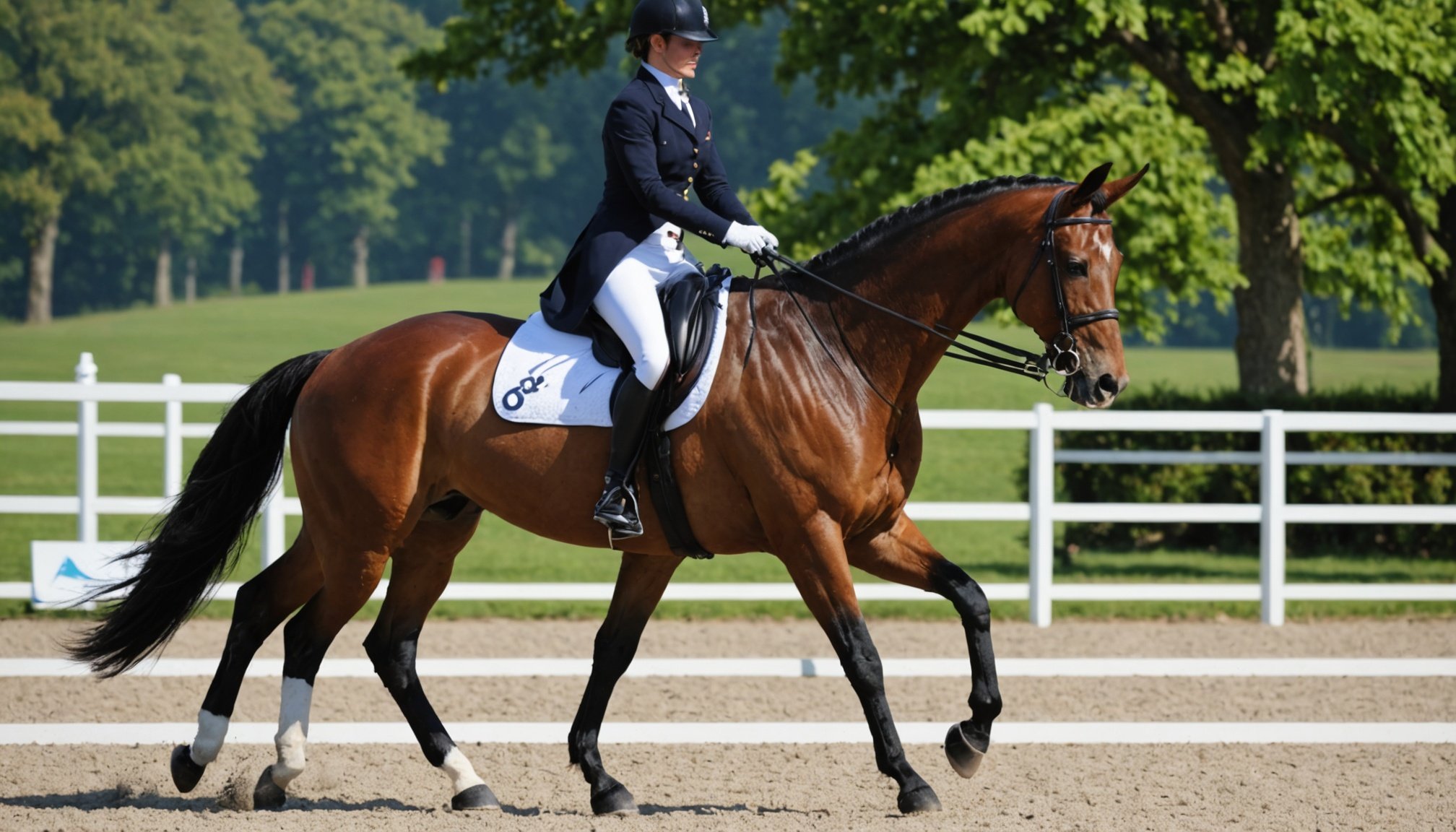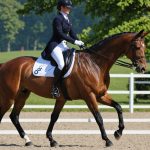Understanding Pressure in Dressage Competitions
In dressage competitions, pressure management is a crucial element that can deeply influence a rider’s performance. This pressure stems from high expectations, both personal and external, that every competitor is keenly aware of. These high-stakes environments often give rise to performance anxiety, which can hinder one’s ability to execute skills with precision and fluidity.
Psychological barriers are common obstacles in dressage. Fear of judgment, perfectionism, and the mental burden of competition can severely impact a rider’s focus and emotional equilibrium. Riders must navigate these mental hurdles to maintain composure and deliver their best performances. Identifying the specific stress triggers that affect an individual can be the first step in overcoming these barriers.
In the same genre : Unlocking Archery Potential: How Yoga Enhances Strength and Flexibility for Competitive Shooters
To effectively manage pressure, riders should develop strategies tailored to their personal stress responses. This involves self-assessment to pinpoint what specifically triggers anxiety during competitions. Techniques such as mindfulness, breathing exercises, and positive visualization can be employed to calm nerves and enhance concentration. Additionally, establishing pre-competition routines can imbue a sense of control and familiarity, mitigating the anxiety of unpredictable events.
Understanding and managing the psychological aspects of dressage not only aids in alleviating performance anxiety but also enriches the overall competition experience.
Topic to read : Elevate your game: key strategies for rugby players to master tackling techniques and minimize injury risks
Essential Focus Techniques
To enhance mental clarity and boost performance, adopting practical focus techniques is vital. Various methods can sharpen focus, each supporting athletes’ quest for peak performance.
Visualization Practices
Mental imagery plays a crucial role in performance enhancement. It involves picturing a successful outcome before it happens. To create effective visualization routines, start by setting clear goals. Integrate all senses in your imagery: see, feel, and hear what success is like. Experienced competitors often share success stories where practice visualization techniques led to breakthroughs in performance.
Breathing Exercises
Controlled breathing is essential for reducing stress. Techniques such as the 4-7-8 method and box breathing can be used depending on the need. These exercises slow heart rates and foster a sense of calm, improving focus under pressure. Integrating these exercises into training can seamlessly enhance mental clarity, allowing for increased focus when it is needed most.
Mindfulness and Presence
Mindfulness in competition is the art of maintaining present moment awareness. Techniques to stay present might include focused attention on physical sensations like the rider’s contact with the horse. Practical examples show that staying mindful ensures clear decision-making and maintains focus through demanding tasks, leading to consistent performance enhancement.
Mental Resilience Building
Mental resilience is a vital skill that allows individuals to effectively handle stress and adversity by adapting to new situations or recovering quickly from challenges. It involves the capacity to maintain mental fortitude during difficult times and bounce back from setbacks with a competitive mindset. This resilience is crucial not only in personal life but also in professional and competitive environments where pressure often reaches high levels.
To strengthen mental resilience, one can engage in various exercises. Mindfulness and meditation practices are excellent coping strategies that help individuals centre themselves and reduce stress. By focusing on the present moment, people can enhance their ability to cope with pressure and build mental toughness. Regular exposure to challenging situations, whether through physical training or mental exercises, can also develop resilience by increasing one’s tolerance for discomfort.
Another important aspect of building resilience is cultivating a growth mindset. Embracing challenges as opportunities to learn and grow rather than threats to success fosters resilience. A growth mindset encourages individuals to view failures as stepping stones to improvement instead of insurmountable obstacles. By combining these strategies, individuals can develop a competitive mindset that thrives in any situation, turning challenges into opportunities for personal and professional growth.
Practical Application in Training and Competition
Mastering competition preparation requires integrating effective training strategies with mental exercises to enhance performance. Athletes often excel by incorporating structured planning within their routines, aligning physical training with mental conditioning.
Setting Realistic Goals
Goal-setting is crucial for maintaining focus and direction. Athletes should establish specific, measurable, and time-bound goals to ensure they are achievable. Tracking progress allows individuals to assess their development and make necessary adjustments. This adaptive approach helps in recognizing and celebrating small victories while refining strategies for long-term success.
Developing Routine and Rituals
Pre-competition routines provide mental stability and confidence. Top competitors often utilize personalized rituals, such as visualization techniques or breathing exercises, to calm nerves and enhance concentration. Personalizing these routines ensures they meet individual needs, maximizing their effectiveness and supporting athletes in achieving peak performance during competitions.
Handling Adversity in Competitions
Facing unexpected challenges requires resilience. Competitors can build mental toughness by practicing strategies for coping with setbacks, such as reframing negative thoughts and focusing on present tasks. Mental exercises like mindfulness and positive affirmations encourage athletes to embrace imperfections and maintain performance despite adversity. These mental strategies not only prepare competitors for unforeseen difficulties but also foster a resilient mindset crucial for success.
Expert Insights and Resources
Navigating the world of dressage can be daunting, but leveraging expert insights and resources can make the journey smoother. Top trainers often emphasise the importance of understanding the horse’s psychology. For instance, dressage expert Jane Doe notes, “Building a partnership based on trust and mutual respect is crucial.” This highlights the importance of patience and empathy in training.
For those eager to deepen their knowledge, there are numerous recommended books and resources available. Titles such as “Dressage for the 21st Century” and “Understanding Dressage: From Basics to Mastery” offer valuable professional advice and practical tips. These resources are especially beneficial for those looking to refine their techniques and improve performance.
Engaging with the dressage community can also offer support and mentorship. Joining forums or local clubs provides opportunities to connect with experienced riders and trainers. Many top performers in the field often encourage newcomers to seek guidance from seasoned professionals as a way to fast-track their learning. By actively engaging and learning from these expert resources, individuals can significantly enhance their dressage skills and knowledge. This dynamic approach ensures that both horse and rider grow harmoniously, achieving greater success in dressage.










